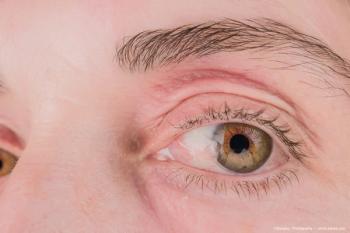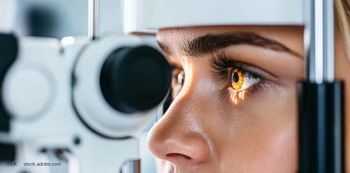
The 'intelligent' way to train staff
Patient excellence training should focus more on how to build a human connection while entering data into a terminal than how to use the latest and greatest diagnostic equipment. People over the age of 35 are either looking for life balance (in the case of a Millennial) or that respect he or she had in the professional arena before retirement (in the case of Baby Boomers.)
Editor’s Note:
Last month, when the sky turned dark, those in its path were reminded that some events are a force of nature and worthy of our attention. I suggested closing offices for two hours, enjoying the spectacle, and making the event tax-deductible by adding a training with the following topic: How to Make A Patient for Life.
I confess, as the eclipse grew closer, I heard Welsh singer Bonnie Tyler crooning the 80s song "Total Eclipse of the Heart." Songwriter Jim Steinman was onto something. Today’s successful eyecare practice will only be successful if patients consider that coming to us for eyecare and optical product is a need. I want patients to feel the emotion expressed in Steinman’s words and look forward to making his or her vision ‘right’ with excellence of care and quality spectacle lenses or the latest contact lens technology.
It’s really simple, just like the eclipse, patient perception is a force that shouldn’t be ignored. And just like Steinman’s song, most of your patients were born before this May 1983 release skyrocketed to the top of the charts.
What this means to you is that your patient excellence training should focus more on how to build a human connection while entering data into a terminal than how to use the latest and greatest diagnostic equipment. People over the age of 35 are either looking for life balance (in the case of a Millennial) or that respect he or she had in the professional arena before retirement (in the case of Baby Boomers.)
In today’s HR lingo, this type of training is often marketed under titles that include the moniker ‘Emotional Intelligence’ or EQ. Cutting-edge research into EQ has shown that it plays a critical role in higher productivity, performance, and job satisfaction. Healthcare professionals who have a high level of emotional intelligence are more confident, more capable, and earn greater respect from patients. They are also better able to stay calm, flexible, and focused when a patient is upset and starts yelling; basically, when panic threatens to set in.
As it relates to patient care, being more emotionally intelligent means your staff is efficiently moving the patient through the process and simultaneously looking for opportunities to improve a patient’s perception of care. Because employees and doctors may not have anything in common with the patient receiving care, EQ training increases awareness and understanding of how and why others behave the way they do.
For example, eccentric patients really don’t all decide to book exams around a full moon. Eyecare team members with high EQ are adept at using empathy and constructive communication to create a collaborative, cooperative connection with patients. Even during a full moon, employees with a high EQ tend to be flexible, adaptive, self-motivated, and confident. It’s because those high-EQ folks on your team understand the importance of self-control in high-stress situations as well as how their ability to understand and influence patients sets the tone for the entire patient visit.
For example, if your front desk employees never look up from their computers, patients feel ignored. Throw in an impersonal sign saying, “WAIT HERE. DO NOT APPROACH FRONT DESK UNTIL CALLED” and a desire to create privacy might create an adversarial feeling in the gut of waiting patients.
Imagine this change in a one-doctor practice: the front desk person glances at the time and the schedule as a patient approaches the front desk and issues the following greeting while smiling:
“Hello! Are you here for your three o’clock appointment? (Continuing after the patient confirms she is indeed the expected patient.) Welcome back to the office Mrs. Smith. If you would be so kind as to sign in, I’ll be generating your paperwork in a moment. (Pause.) It’s good to see you again, by the way.”
This word pattern is easily adapted for a multi-doctor practice.
Can you imagine the rapport that has been established? This word pattern gets the patient experience moving in the right direction! He or she will appear to naturally relate well to others. Fortunately, for those of us that are more task-focused, the ability to accomplish more through encouragement and persuasion is a learned skill. Let’s call it the ‘I Care EQ’ advantage.
All practices obtain some word-of-mouth referrals from happy patients, but some practices receive a huge amount. Why is that? A growing body of evidence suggests it is because of the natural or developed EQ of doctors and staff. Simply put, a core of happy patients recommends you to others and then they recommend others to you, and so on.
Word-of-mouth referral occurs when patients are beyond satisfied with your services. We must set a higher goal than merely satisfied. We must reach for enthusiastic. We achieve that through the patient experience.
What is great customer service?
We may all think we know great customer service when we see it, but let’s break it down to the real world of eyecare practices. Your team’s EQ will ‘totally eclipse the heart’ of the patient if it shines in the following areas:
- The interpersonal factors. This includes good manners and being attentive and thoughtful. Smiling has a huge effect. Using a patient’s name-even though you don’t have to-builds relationships.
- Convenience. You might not think of convenience when it comes to customer service issues, but you should. Making wait times minimal and reducing the paperwork for patients are issues a highly functional EQ team voluntarily address. Another is dealing with medical work-ins. Is there concern in the voice of individual that triages calls? Would that patient think the employee cared that he or she was upset and in urgent need to come right over?
- Easy to do business with. Often an ‘I Can EQ’ attitude of an employee impacts things like quick check-in and check-out and fast delivery times on glasses and contact lenses. Explaining policies and quoting fees in advance are other ways to showcase that ‘I Care EQ’ advantage in the patient experience.
- Service recovery. How well does your office handle matters when something goes wrong? It’s easy to think one has that ‘I Care EQ’ advantage when the patient loves you and cooperates, but how does your weakest employee handle the unreasonable person?
Is your head spinning? EQ training takes you and your staff to a deeper understanding about the big picture of customer service as a business development tool. Big picture, long term profitability is worth far more than the minor cost of staff training and practice policies that give an employee permission to let the patient win with dignity.
Simply put, doctors and staff who understand the elements of connecting with patients don’t let their egos get in the way of the practice’s business growth goals.
It begins with self-awareness. EQ training should include a way for each staff member and doctor to evaluate his or her current level of EQ. It isn’t unusual for someone who thinks he or she is an excellent communicator to self-identify through testings (without the results being seen by anyone other than that individual) as someone who others see as cold and unfeeling.
Think about it-how can someone who does not excel at inspiring, guiding, and leading others to comply with treatment plans and invest in quality eyewear paired with the latest digital spectacle lenses expect to be successful at helping you grow your practice?
Please don’t start adding up the cost of closing your office for two hours, feeding your staff, and hiring a professional trainer. As in the case of all employee-training, the practice that foots the bill for this solar eclipse viewing/training may turn in expenses as tax-deductible.
Look on the bright side. It’s easy to see that the practices that shine brighter than the sun are those with better-trained employees.
Newsletter
Don’t miss out—get Ophthalmology Times updates on the latest clinical advancements and expert interviews, straight to your inbox.













































.png)


